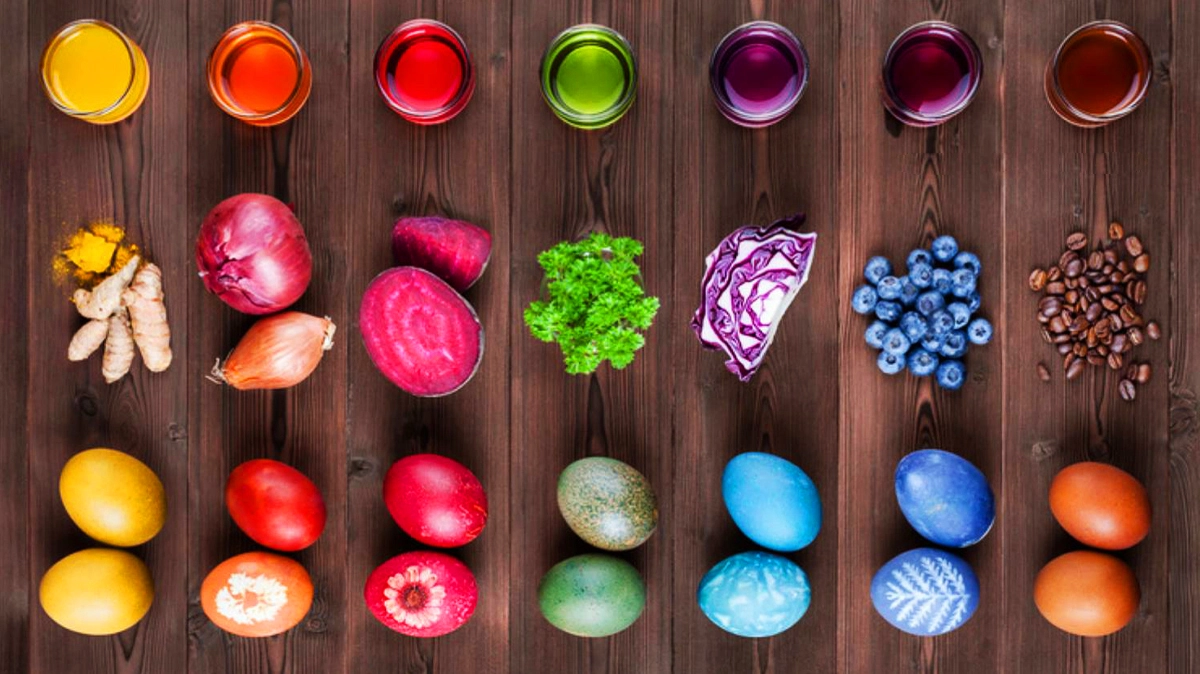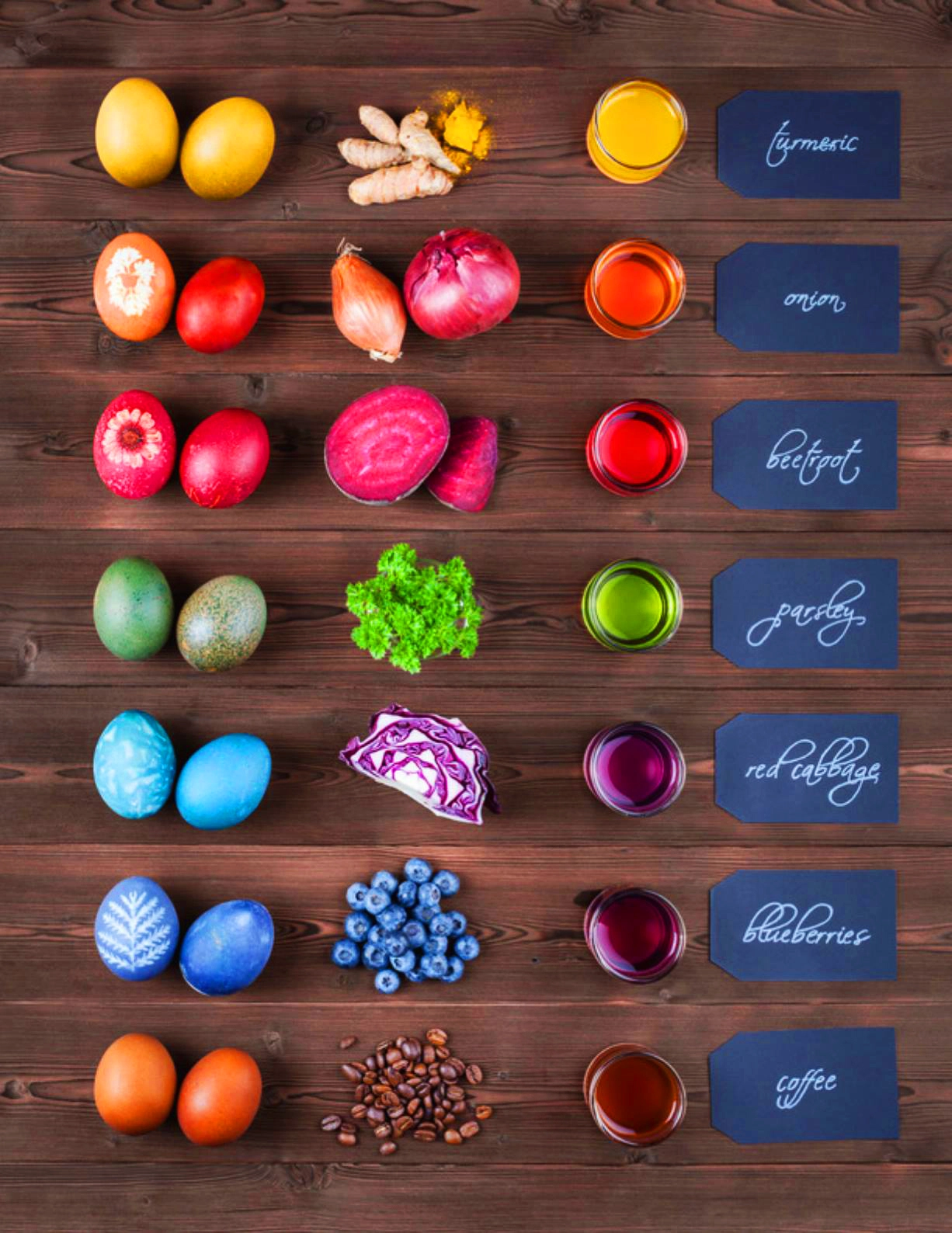
Easter is coming soon. Even though things are a bit different this year, many are excited about the usual egg-dyeing tradition. Instead of buying dye from the store, we have a fun idea: use food and plants to dye eggs naturally. It's something we've always wanted to try, and since times are changing, why not give it a shot? We'll show you some easy, eco-friendly options and encourage you to get creative!
Below, we've listed the most common natural colourants. We'll explain how to achieve your desired colour shades. Before starting, it's recommended to clean the eggs with vinegar water. This helps them absorb the colour better.
We'll be using the hot dyeing method. After following the procedures, you can filter the colour solution before boiling the eggs in it. You can achieve all colour variations not only with hot dyeing but also with a cooled solution that has steeped enough beforehand. This way, even kids won't burn their fingers. Simply pre-cook the eggs as usual, then leave them in the dye until you get the colour you want.
with turmeric:
Fresh turmeric or its powder can give a vibrant golden-yellow hue to your eggs. Cut fresh, peeled turmeric into pieces and boil them in plenty of hot water for 1-2 hours. If fresh turmeric isn't available, you can use turmeric powder instead, which also works well.
with onion skins and coffee:
Onion skins have been a traditional dyeing method for ages. Soak about 2 handfuls of onion skins in 1-2L of boiling water for a few minutes. Coffee can also be used for brown tones. Boil about 50g of ground coffee for a maximum of 30 minutes.
with beetroot:
Beetroot provides a vibrant red colour, similar to turmeric. Boil the beetroot in just under 1L of water for about 15 minutes to create the dye solution.
with parsley, spinach and nettle:
For various shades of green, try boiling a bunch of parsley, spinach or stinging nettle in 1L of hot water for around 30 minutes.
with red cabbage and blueberries:
To achieve blue tones, use ingredients like red cabbage and blueberries. Boil about 1 cup of each in 1-2L of water for up to an hour, depending on the desired shade.
Feel free to experiment with other foods and non-toxic plants to discover new shades. Let your creativity run wild!
